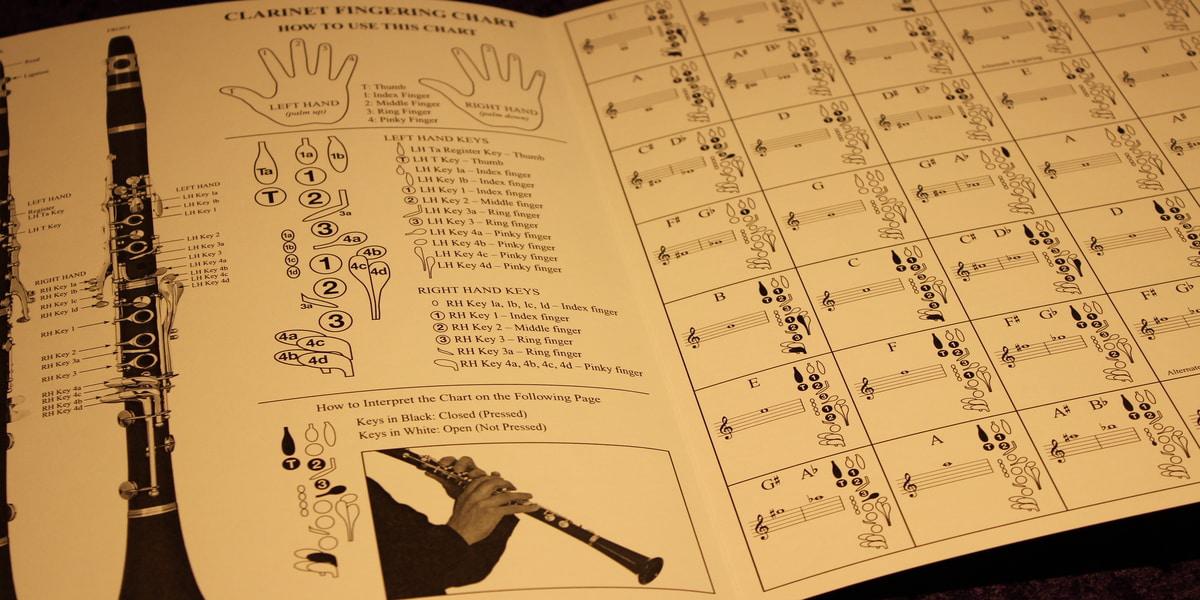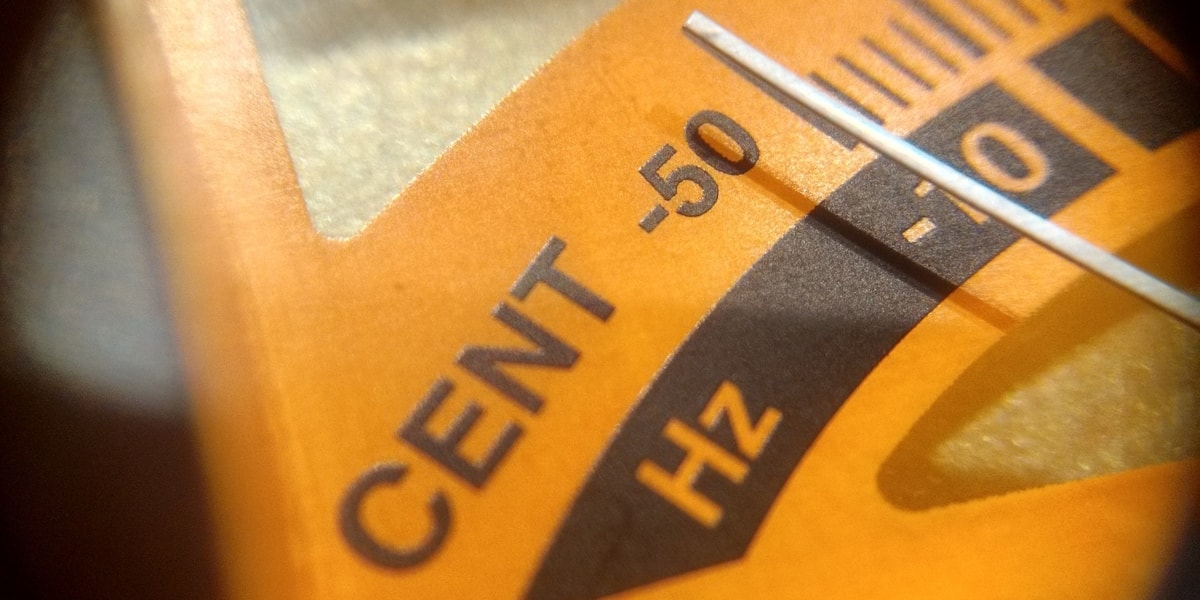As a musician, you have probably heard your band director tell you to practice your scales, but why? Practicing clarinet scales will enrich many aspects of your clarinet playing, as well as help you better understand music theory. Yes, it may seem boring to keep practicing the basics every day, but in the long run, it will help you become a better clarinetist.
As a beginning clarinetist, I would practice my scales every day because my private lesson teacher assigned them. However, I hated practicing scales. Like many beginning musicians, I thought of my scales as more of a chore rather than an exercise that would make me a better clarinetist.
Once my private lessons ended and I became unsupervised while practicing, I slowly drifted away from practicing my scales. At the time, it felt nice to not practice my scales but it hurt me in the long run.
I am a Bachelor of Music degree which means I had to do a bar exam at my sophomore year, spring semester jury. Of course, this bar exam was basically a scales test! I had to know all of the major and minor scales and play them with no mistakes in front of the woodwind faculty.
Since I had not been practicing my scales daily like a good student, I had to practice extra hard to re-learn all 24 major and minor scales. Much like sports, if you take a break, your body is quick to forget the specific movements and techniques necessary to perform well.
Scales are a huge part of clarinet fundamentals. At every ensemble audition, music scholarship audition, honor band or all-state audition, or any other music group audition, it is very likely that you will be asked to play a handful of scales. It is important that you know your scales forwards and backwards. It is also important that you can play your scales beautifully, just like you would with your solo.
It can be hard to keep up with practicing scales every day. Throughout my college career, I have learned different techniques to make practicing scales more interesting and beneficial.
- Make flashcards. To keep yourself accountable for practicing all of the scales, write the names of all 24 scales down on index cards. I make two piles for major scales and minor scales. Every day, go through as many flashcards as you can
- Practice with friends. Practicing scales with friends keeps you accountable, as well as your friends accountable. I would give my friend a scale to play and vice versa.
- Practice each scale with a variety of different articulation combinations and at different dynamic levels.
- For the chromatic scale, don't always start on low E. Pick a random note on the clarinet, and start there.
Types of Scales
A scale is a sequence of notes that are arranged according to a whole step and half step pattern. A scale has eight notes in an octave. The major, minor and chromatic scales are important to know and memorize to understand the structure of music. These scales also benefit overall clarinet playing and performance.
Major Scales
Major scales are used to represent happiness and joy. Major scales are the basic scales that every beginning musician learns. A major scale is constructed as follows: Whole (step) - whole - half - whole - whole - whole - half. A good example of a major scale is the song "do-re-mi" from the Sound of Music movie.
Beginner clarinets will begin with the C major scale because there are no sharps or flats. Gradually, they will start playing scales with more sharps and flats. Generally, the more sharps and flats a scale has the more difficult it will be because of the fingering patterns.
Minor Scales
Minor scales are used to represent sadness. There are three different types of minor scales: natural minor, harmonic minor, and melodic minor. To understand the structure of music, it's important to understand the structure of these three minor scales.
Natural Minor Scale
The formula for a natural minor scale is as follows: whole (step) - half - whole - whole - half - whole - whole. Another way to think of a natural minor scale is to think of the natural minor scale as a major scale, but with a lowered third, sixth, and seventh scale degree.
For example, a C minor scale has three flats because its parallel minor is Eb major. In a C major scale, there are no flats or sharps. But in a C minor scale, the third, sixth, and seventh are lowered.
Harmonic Minor Scale
To construct a harmonic minor scale, all you need to do is raise the seventh scale degree of the natural minor scale up a half step. For example, to make a C harmonic minor scale all you need to do is raise the sixth scale degree which is a Bb. In a harmonic minor scale, the Bb will become a B natural. The harmonic scale has more spark to it because of the leading tone and resolution.
Melodic Minor Scale
The melodic minor scale is split in half. The ascending part of the scale is the melodic minor scale. The descending part of the scale is a natural minor scale. To construct a melodic minor scale, raise the sixth and seventh scale degree of the natural minor scale up a half step. For example, a C melodic minor scale would be C, D, Eb, F, G, A (natural), B (natural), and C. When descending, the sixth and seventh scale degrees go back to being Ab and Bb.
Every major scale has a relative minor scale. The tonic of the relative minor scale is the sixth scale degree of the major scale. The tonic of the natural minor scale is the sixth scale degree of its relative major scale. For example, the relative major scale to an A minor scale is C major because the sixth scale degree of C major is A.
The relative major and minor scales have the same key signatures. Major scales also have a parallel minor scale. The parallel minor scale is the scale that shares the same tonic. For example, F major and F minor are parallel keys. The parallel minor won't have the same key signature as their major key. For example, F major has one flat and F minor has four flats.
Chromatic Scale
The clarinet chromatic scale is the most important scale a clarinetist learns. The chromatic scale incorporates every note on the clarinet, as well as alternate fingerings for specific notes.
An example of an alternate fingering is low F#. Low F# can be played with both the left pinky and the right pinky. In technically challenging passages, it is likely to have many pinky key notes in a row. While it is possible to play all of those notes with the right pinky, it is not ideal.
To fix this, the clarinet has alternate keys that utilize the opposite hand but play the same note. Other alternate fingerings produce a better intonation for specific notes, especially those in the altissimo register.
The chromatic scale may sound and look intimidating, but it becomes more manageable when broken down into sections. Beginners should only focus on the first octave of the chromatic scale. Once the clarinetist feels comfortable with the first octave, start adding in the second octave.
When practicing the chromatic scale, practice it slowly. Practicing the chromatic scale too fast sacrifices the quality of sound you produce and will cause your fingers to mess up. The purpose of the chromatic scale is to strengthen finger coordination and dexterity and to strengthen your knowledge of all the clarinet fingerings.
Scale Methods Books
Scale methods books are great resources to have. As you advance as a clarinetist, you will be able to play scales in different variations. Variations include playing the scale in thirds and fourths and playing the scale in arpeggios.
The Carl Fischer 24 Varied Scales and Exercises for Clarinet includes all 24 scales in original form and in variation. This scale methods book makes practicing scales interesting and fun for beginner and intermediate clarinetists.
The Carl Bermann's method book for clarinet is the perfect resource for practicing scales. This method book includes scale, arpeggio, and chord patterns for every major and minor key. This scales book is a great resource for intermediate to advanced clarinetists.
The Benefits of Practicing Scales
Every musician should incorporate scales into their daily practice routine. Practicing the basics in music is the same as practicing the basics in a sport.
For example, as a runner, you become better from warming up correctly and going for shorter runs to focus on form and breathing. If you only go for long runs every day, you are more prone to injuries and your body will become tired. Practicing scales is like going for a shorter run. Scales are the building blocks to becoming a good musician.
Timing and Tempo
Scales should always be practiced with a metronome. When playing a scale, it should sound seamless and even. Begin practicing your scales at a slow tempo. My piano professor in college would always say, "speed is your enemy".
Practicing a scale at a tempo that is too fast will cause your fingers to mess up, the scale will sound rushed and uneven, and you will become frustrated. Practicing scales at a slow tempo allows you to focus on where your fingers are going next. A slow tempo will also help you listen to each note's intonation.
Another benefit of practicing scales at a slow tempo is being able to feel the sensation of each note. In music, each note either pushes forward or settles back. The same sensations are present in scales.
If each note of the scale is played with the sensation of pushing forward, the scale will sound too rushed. If each note of the scale is played with the sensation of pulling back, it will sound dragged.
Playing the scale at a slower tempo will allow you to decipher which notes push forward and which ones pull back. For example, in a C major scale, the climax of the scale is the second octave C. The leading tone of the scale is B, the note right before the climax.
Would the leading tone B sound better pushed forward, giving more emphasis on the C? Or would the leading tone B sound better pulled back, creating more tension and yearning for the resolution of the C?
Another exercise that will help you with understanding sensations is playing the scale, but only on one note. For example, I would "play" a C major scale, but only play a C for each note.
The purpose of this exercise is to play the note with a different sensation. To keep track of which note of the scale I was on, I would sing each solfege pitch in my head.
This exercise eliminates fingerings, allowing you to focus solely on the sensations of the notes. You can use this exercise with repertoire as well. It is very helpful when trying to understand the sensation of music because you don't have to focus on fingerings.
Once you have the fingerings and sensations down, you can start to slowly increase the tempo on your metronome. However, if you play a scale at a faster tempo and your fingers start to fumble or you can no longer hear the sensation, stop at that tempo and work finger coordination and sensation until you can play it correctly. Do not go faster than you can play beautifully and correctly.
Everything you learn from these scale exercises will transfer over to repertoire. In music, it is important to practice at a slow tempo. For technical pieces, it's important to practice at a slow tempo to ensure that you have the fingerings. From there, you can slowly increase the tempo.
For lyrical and slow pieces, it is important to practice at a slow tempo to understand the sensation of the notes, how the notes fit into the chords, and to check intonation.
Intonation
Practicing scales will improve clarinet intonation. As always, practice scales with a tuner on the stand. Practicing clarinet scales as long tones will help improve intonation.
Clarinet long tones is another exercise that is important to incorporate into your daily practice routine. Clarinet long tones target a wide range of basic skills that are essential for improving your clarinet playing. Long tones focus on posture, air support, the oral cavity, the embouchure, intonation, and the color of the sound.
All of these aspects should be focused on while playing scales as well. Playing each note of the scale as a long tone will help you pinpoint the pitch tendency of that note. We often forget that scales are a form of music too. Scales should be in tune and played beautifully.
First, choose a scale to practice. Second, set your metronome at a slow to moderate tempo. I usually start at quarter note at 60. From there, play each note of the scale for four beats, ascending and descending. While you are playing, make sure you are adjusting the pitches that are out of tune.
Coordination and Dexterity
Finger coordination and dexterity are essential skills to have as a musician, especially as a clarinetist. For brass players, there are only three or four valves that they have to focus on. Most of their sound comes from their embouchure and aperture.
However, for woodwind instruments like the clarinet, there are a total of seven tone holes to cover with our fingers. Furthermore, there are multiple keys that our fingers, mostly pinkies, depress to play many notes. As a beginner, it can take a while to teach your fingers how to navigate the clarinet.
Even as an advanced clarinetist, I still need to practice my finger coordination, especially for technical passages or after I haven't practiced in a while. The design of newer clarinets, such as buffet clarinets offers a more comfortable hand position, as well as an adjustable thumb rest to provide more comfort while playing.
Practicing scales, especially the chromatic scale and scales with harder key signatures, will help improve finger coordination and dexterity. Strengthening finger coordination and muscle memory is a long process, but if you practice your scales daily at a slow tempo it will become easier and easier.
Sightreading
Knowing all 24 major and minor scales will significantly improve your sight-reading skills. Music is based on a series of scale patterns. During the time that is given to analyze the music, it will be easier to find scale patterns within the music based on the accidentals and the key signatures.
Improvisation
Scales are the foundation of jazz music and improvisation. For jazz, the scales don't stop at major and minor scales. Jazz scales include the church modes: Ionian, Dorian, Phrygian, Lydian, Mixolydian, Aeolian, and Locrian.
Simply put, each mode is in the same key signature as the original scale, but each scale starts on a different note of the scale (scale degree). For example, the original key of a scale is C major.
A Dorian C major scale would be a C major scale, but starting on the second note which is D. Knowing and memorizing all of these scales will provide a solid foundation for improvisation.
Articulation
Adding articulation to scales practice not only spices things up but it also significantly improves your articulation. During a saxophone studio, one of my upperclassmen friends shared his practice strategies for scales and articulation.
First, he picks a few different scales; a mix of major scales, minor scales, and scales in different modes. Second, he writes down different articulation combinations. These combinations can include slur two tongue two, slur three tongue one, all slurred while ascending and all tongued while descending.
Lastly, he chooses a scale to play and then plays every articulation combination. Combining scale and articulation practice will keep practicing more fun and interesting, as well as improve both skills.
Clarinet Embouchure
Practicing clarinet scales daily will improve your clarinet embouchure. Clarinet scales are the perfect way to warm up the embouchure and the oral cavity before diving into the repertoire.
When practicing a piece of music, we are focusing on a variety of different things and clarinet embouchure is often pushed to the side. Clarinet scales allow you to focus on the fundamentals, including your clarinet embouchure.
Closing Thoughts
The famous MLB All-Star Barry Larkin once said, "What people don't realize is that professionals are sensational because of the fundamentals".
If I could go back to my early years of playing clarinet and tell myself one thing, it would be to practice my clarinet scales diligently every day, even if I didn't want to.
Practice your clarinet scales every day with a positive mindset. Practice slow, stay focused, stay motivated, and don't give up.






